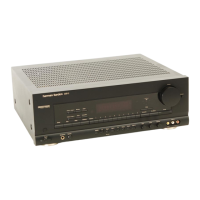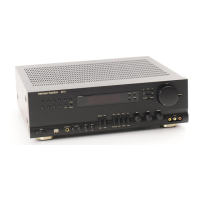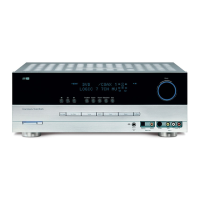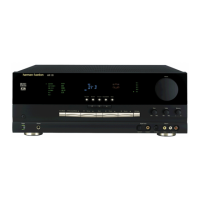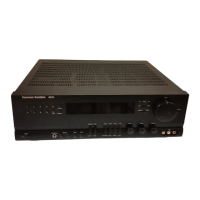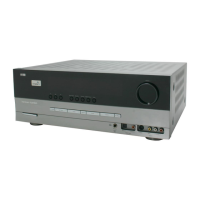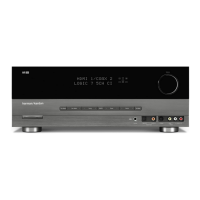(
~1111:11nr~:~;;;1;,~;;~t~;.;;1;1s~;;~~&.s:;~1~;;ft1tut;;1u!Ji!:1;.;r4:Jirr~:;;a;~g4zj1
Nominal Limit
Power Consumption
At Rated Power All Channel Driven 400
W
300-
500W
Idling at Minimum Volume Control
Power Supplies :
USA/Canada
Europe
Dimensions
(W
x H x
D)
:
inches
mm
Weight (lbs/kgs)
55
W 45 -
65
W
AC
120
V,
60
Hz
AC
230
V,
50
Hz
17
111sx
6
a1a2x
18
111s
444 X 160 X 459
32.0/14.4
These specifications are service target specs.
Specifications and components are subject to change without notice.
Overall pertormance will
be
maintained or improved.
ELECTROSTATICALLV SENSITIVE (ES) DEVICES
Some semiconductor (solid state) devices can
be
damaged easily by static electricity. Such components commonly
are called Electrostatically Sensitive (ES) Devices. Examples of typical
ES
devices are integrated circuits
and
some
field effect transistors and semiconductor "chip" components. The following techniques should be used to help
reduce the incidence of component damage caused by static electricity.
1.
Immediately before handling any semiconductor component or semiconductor-equipped assembly, drain off
any electrostatic charge on your body by touching a known earth ground. Alternatively, obtain and wear a
commercially available discharging wrist strap device, which should be removed for potential shock reasons
prior to applying power to the unit under test.
2.
After removing
an
electrical assembly equipped with
ES
devices, place the assembly
on
a conductive surface
such as aluminum foil, to prevent electrostatic charge buildup or exposure of the assembly.
3. Use only a grounded-tip soldering iron
to
solder or unsolder
ES
devices.
4.
Use only
an
anti-static solder removal device. Some solder removal devices not classified as "anti-static" can
generate electrical charges sufficient to damage
ES
devices.
5.
Do
not use freon-propelled chemicals. These can generate electrical change sufficient to damage
ES
devices.
6.
Do
not remove a replacement
ES
device from its protective package until immediately before you are ready to
install it. (Most replacement
ES
devices are packaged with leads electrically shorted together by conductive
foam, aluminum foil or comparable conductive material.)
7.
Immediately before removing the protective material from the leads of a replacement
ES
device, touch the
protective material to the chassis or circuit assembly into which the device will be installed.
CAUTION:
Be
sure
no
power is applied to the chassis
or
circuit, and observe all other safety precautions.
8.
Minimize bodily motions when handling unpackaged replacement
ES
devices. (Otherwise harmless motion
such as the brushing together or your clothes fabric or the lifting of your foot from a carpeted floor can generate
static electricity sufficient to damage an
ES
device.)
PRODUCT SAFETY NOTICE
Each precaution in this manual should
be
followed during servicing.
Components identified with the IEC symbol
A
in
the parts list are of special significance to safety. When
replacing a component identified with
A , use only the replacement parts designated, or parts with the
same ratings or resistance, wattage, or voltage that are designated
in
the parts list
in
this manual.
Leakage - current or resistance measurements must be made to determine that exposed parts are
acceptably insulated from the supply circuit before returning the product to the customer.
3
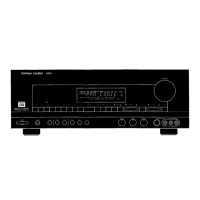
